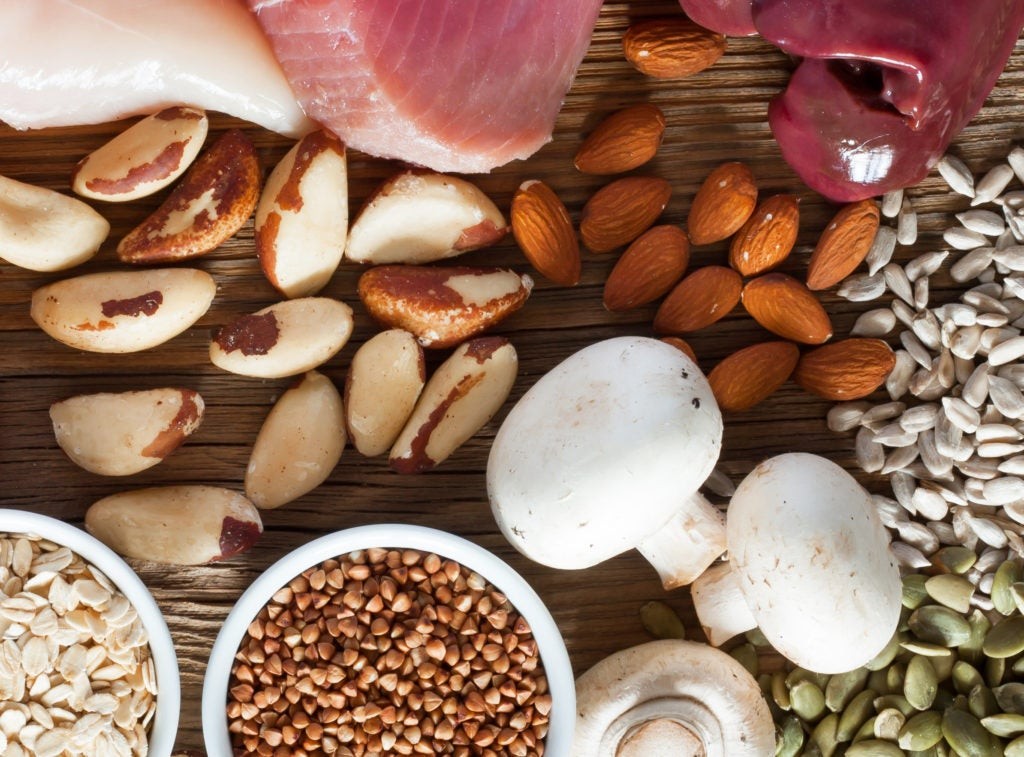Vitamin B5, also known as pantothenic acid, is an essential nutrient naturally found in various foods. It plays a crucial role in producing coenzyme A (CoA), a vital compound that aids enzymes in metabolizing fatty acids and performing other metabolic functions. Additionally, it’s involved in the synthesis of acyl carrier protein, which is also crucial for building fats. While gut bacteria can produce some pantothenic acid, it’s not sufficient to meet the body’s needs, emphasizing the importance of dietary sources.
Recommended Daily Intake of Vitamin B5
The Recommended Dietary Allowance (RDA) for adults aged 19 and older is 5 mg daily. This increases to 6 mg during pregnancy and 7 mg during lactation. Importantly, a Tolerable Upper Intake Level (UL) hasn’t been established for pantothenic acid, as high intakes haven’t been associated with toxicity.
Vitamin B5 and Its Health Benefits
Pantothenic acid’s role in fat metabolism has led to studies exploring its potential in managing dyslipidemia, a condition characterized by abnormal lipid concentrations in the blood. This includes elevated LDL (“bad”) cholesterol and triglycerides, and low HDL (“good”) cholesterol. Adequate CoA levels are essential for efficient fat breakdown and clearance from the blood.
Some research suggests that pantothenic acid may also possess antioxidant properties, potentially reducing the low-grade inflammation associated with early-stage heart disease. However, further research is needed to determine whether pantothenic acid supplements can independently lower blood fats or enhance the effects of a heart-healthy diet.
One double-blinded randomized trial involving 216 participants with moderate dyslipidemia investigated the effects of CoA and pantethine (another form of pantothenic acid) supplementation. Participants received either 400 mg of CoA or 600 mg of pantethine daily for 8 weeks, along with dietary counseling on a cholesterol-lowering diet. The CoA group experienced a significant 33% reduction in triglycerides compared to baseline, along with decreases in total cholesterol and increases in HDL cholesterol. The pantethine group showed smaller improvements. Notably, no adverse side effects were observed in either group.
Top Food Sources of Vitamin B5
Pantothenic acid is widely distributed in both plant and animal foods, as it is present in all living cells. Excellent sources include:
- Fortified Cereals: Many breakfast cereals are fortified with B vitamins, including pantothenic acid.
- Organ Meats: Liver and kidney are particularly rich in vitamin B5.
- Beef: A good source of pantothenic acid.
- Chicken Breast: Another excellent animal-based source.
- Mushrooms: Certain varieties of mushrooms are high in pantothenic acid.
- Avocados: This creamy fruit offers a good amount of B5.
- Nuts and Seeds: Almonds, sunflower seeds, and other nuts and seeds contain pantothenic acid.
- Dairy Milk: Milk and other dairy products provide vitamin B5.
- Yogurt: Another dairy-based option for increasing pantothenic acid intake.
- Potatoes: Both white and sweet potatoes contribute to B5 intake.
- Eggs: A versatile source of many nutrients, including pantothenic acid.
- Brown Rice: A healthier grain option that contains B5.
- Oats: A breakfast staple packed with nutrients, including pantothenic acid.
- Broccoli: This cruciferous vegetable offers a good amount of B5.
Signs of Vitamin B5 Deficiency and Toxicity
Deficiency
Pantothenic acid deficiency is uncommon due to its widespread availability in foods. It primarily occurs in individuals with multiple nutrient deficiencies, often associated with severe malnutrition. Rare cases may also arise from genetic mutations that impair pantothenic acid metabolism.
Symptoms of deficiency may include:
- Headache
- Fatigue
- Irritability, restlessness
- Disturbed sleep
- Nausea, vomiting, stomach cramps
- Numbness or burning sensation in hands or feet
- Muscle cramps
Toxicity
Toxicity from pantothenic acid obtained through food sources has not been reported. Extremely high doses (10 grams daily) from supplements have occasionally been linked to mild gastrointestinal upset or diarrhea. However, this is rare, and a Tolerable Upper Intake Level (UL) has not been established.
Interesting Facts About Vitamin B5
Pantothenic acid supplements are often marketed for a variety of conditions, ranging from allergies and dandruff to leg cramps and arthritis. Unfortunately, scientific evidence supporting these claims is limited. Therefore, focusing on obtaining vitamin B5 from a balanced diet rich in whole foods is generally recommended.
By understanding the role of pantothenic acid, knowing What Food Has B5, and incorporating B5-rich foods into your diet, you can support optimal health and well-being.

